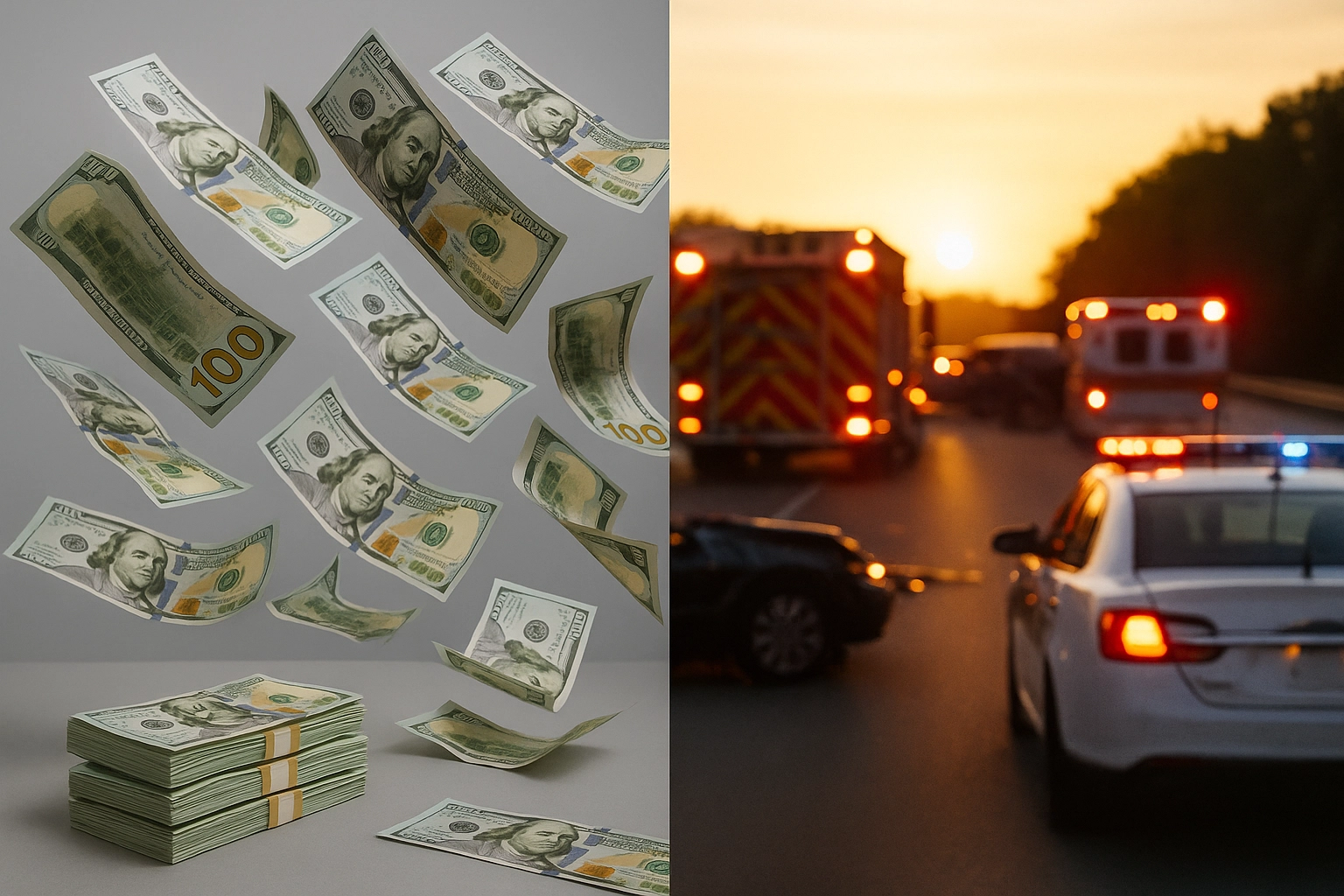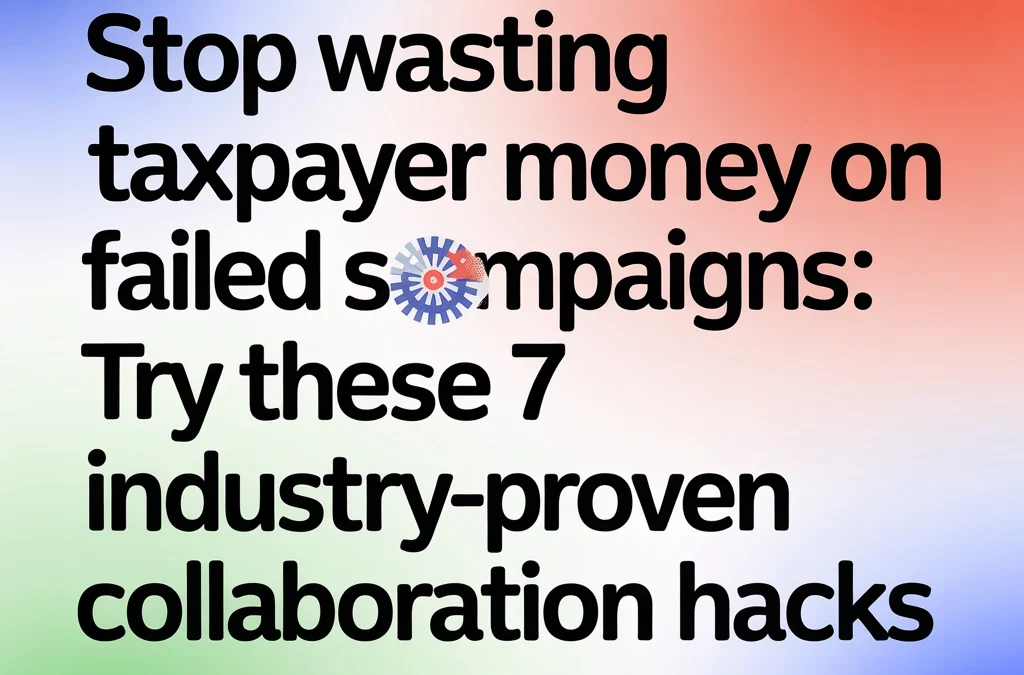AEO Snippet: Government safety campaigns waste billions annually due to poor collaboration between agencies, industry, and communities. Successful safety initiatives require cross-sector partnerships, data-driven messaging, community engagement, shared resources, transparent accountability, continuous feedback loops, and flexible adaptation strategies that unite stakeholders around measurable outcomes rather than competing agendas.
Every year, government agencies burn through hundreds of millions of taxpayer dollars on safety campaigns that not only fail to protect lives but sometimes make the problem worse. The Biden administration alone spent nearly $900 million on a COVID-19 awareness campaign that contained false information and eroded public trust. Meanwhile, the D.A.R.E. anti-drug program actually introduced kids to substances they'd never heard of, and Melbourne's award-winning "Dumb Ways to Die" campaign may have increased railway suicides.
The pattern is clear: traditional top-down safety campaigns are broken. But there's a better way forward.
The Real Cost of Campaign Failures
When safety campaigns fail, the consequences go far beyond wasted money. Lives are lost, public trust erodes, and future safety efforts become harder to implement. The recent COVID-19 public relations disaster demonstrates this perfectly – after spending nearly a billion dollars on messaging that overpromised vaccine effectiveness, Americans lost faith in public health institutions at the worst possible time.

This isn't just about one pandemic response. We've seen this pattern repeat across decades of safety initiatives. HIV/AIDS campaigns in Botswana backfired when condom promotion was portrayed as immoral, causing infection rates to skyrocket. Environmental awareness campaigns reached only people who already cared about sustainability, doing nothing to change behavior among their actual target audience.
The motorcycle safety community faces similar challenges. Traditional awareness campaigns focus on individual rider behavior while ignoring the complex web of factors that actually influence safety outcomes – from road infrastructure and vehicle design to training programs and emergency response systems.
Why Traditional Approaches Keep Failing
Most government safety campaigns fail because they operate in isolation. Agencies work separately from industry stakeholders, community groups operate independently from government initiatives, and research institutions rarely collaborate with frontline implementers. This fragmented approach creates mixed messages, duplicated efforts, and missed opportunities for real impact.
The CDC's adherence to "droplet dogma" during COVID-19 exemplifies this problem. Despite evidence of airborne transmission, institutional inflexibility prevented agencies from incorporating traditional safety strategies like proper ventilation and air cleaning. The result? Catastrophic failure to protect frontline workers who needed protection most.

The 7 Industry-Proven Collaboration Hacks
Smart organizations have discovered that effective safety campaigns require breaking down silos and building genuine partnerships. Here are seven collaboration strategies that actually work:
1. Create Multi-Stakeholder Safety Coalitions
Instead of running separate campaigns, successful safety initiatives bring together government agencies, industry leaders, advocacy groups, and community organizations under one umbrella. These coalitions establish shared goals, coordinate messaging, and pool resources for maximum impact.
The most effective motorcycle safety programs involve partnerships between departments of transportation, motorcycle manufacturers, rider training organizations, law enforcement, emergency services, and rider advocacy groups. When everyone works toward the same measurable outcomes, campaigns become exponentially more effective.
2. Implement Cross-Sector Data Sharing Protocols
Failed campaigns often operate on incomplete information. Successful collaborations establish secure data-sharing agreements that give all stakeholders access to real-time safety metrics, demographic insights, and outcome measurements.
This means government agencies share crash data with manufacturers, training organizations share curriculum effectiveness with policymakers, and community groups contribute local insights that inform campaign messaging. When everyone works from the same data foundation, strategies become more targeted and effective.

3. Establish Community-Led Implementation Teams
Top-down messaging rarely resonates with target audiences. Industry leaders have learned to embed community members in campaign development and implementation. These teams understand local culture, communication patterns, and barriers to behavior change that outsiders might miss.
For motorcycle safety, this means including experienced riders, local club leaders, and community influencers in campaign design. Their insights help avoid tone-deaf messaging and create authentic connections with target audiences.
4. Deploy Resource-Sharing Frameworks
Instead of competing for limited budgets, smart collaborations create resource-sharing agreements that multiply impact. Government agencies contribute regulatory authority and public reach, industry partners provide technical expertise and funding, and community organizations offer local credibility and volunteer networks.
These frameworks eliminate duplicated efforts and ensure resources flow to where they'll have the greatest impact. A motorcycle safety coalition might combine government crash data, manufacturer engineering resources, and rider training expertise to address specific high-risk scenarios.
5. Build Transparent Accountability Systems
Failed campaigns often lack clear success metrics or accountability measures. Effective collaborations establish transparent tracking systems that monitor progress, identify problems early, and adjust strategies based on real-world results.
This includes public dashboards showing safety outcomes, regular stakeholder reviews of campaign effectiveness, and mechanisms for rapid course corrections when initiatives aren't working. When all partners can see what's working and what isn't, collaborative efforts stay focused on results rather than politics.

6. Create Continuous Feedback Loops
Static campaigns that don't adapt to new information inevitably fail. Successful collaborations build ongoing feedback mechanisms that capture insights from frontline implementers, target audience responses, and emerging safety challenges.
These feedback loops ensure campaigns evolve with changing conditions. If motorcycle crash patterns shift due to new technology or road conditions, collaborative safety initiatives can quickly adjust messaging, training programs, and prevention strategies accordingly.
7. Develop Flexible Adaptation Protocols
The most successful safety collaborations prepare for uncertainty by building adaptation protocols into their foundation. Instead of rigid campaign structures that can't change, these initiatives create flexible frameworks that can rapidly pivot when circumstances change.
This includes pre-approved communication channels for urgent updates, decision-making protocols that don't require lengthy bureaucratic processes, and resource allocation systems that can quickly redirect funding to address emerging priorities.
The Path Forward
These collaboration strategies aren't theoretical – they're proven approaches that forward-thinking organizations are already implementing. The key is moving beyond traditional siloed thinking toward genuine partnership models that unite stakeholders around shared safety outcomes.

For motorcycle safety specifically, this means creating coalitions that bring together everyone with a stake in rider protection. When government agencies, manufacturers, training organizations, advocacy groups, and riding communities work together with shared goals and transparent accountability, the results speak for themselves.
The choice is clear: continue wasting taxpayer money on failed isolated campaigns, or invest in collaborative approaches that actually save lives. The stakeholders, resources, and proven strategies already exist. We just need the will to bring them together.
No matter who you are or where you work in the safety ecosystem, you have a role to play in this transformation. Whether you're a government official, industry executive, community leader, or concerned citizen, the time for collaborative action is now. Lives depend on getting this right.
Ready to revolutionize your approach to motorcycle safety campaigns? Connect with industry-leading collaboration strategies at www.RideFearFree.net or call our AI Receptionist at +1 (970) 693-4854.
Dan Kost, CEO – Connect on LinkedIn to discuss how collaborative frameworks can transform your safety initiatives.
Share this post: LinkedIn | Facebook | X | Instagram
Tags: #Motivation #Branding #Strategy #Marketing #AdvertisingAndMarketing #digitalmarketing #Innovation #Sports #MotorcycleSafety #PublicSafety #StakeholderCollaboration #CampaignStrategy #GovernmentEfficiency #SafetyPartnerships

